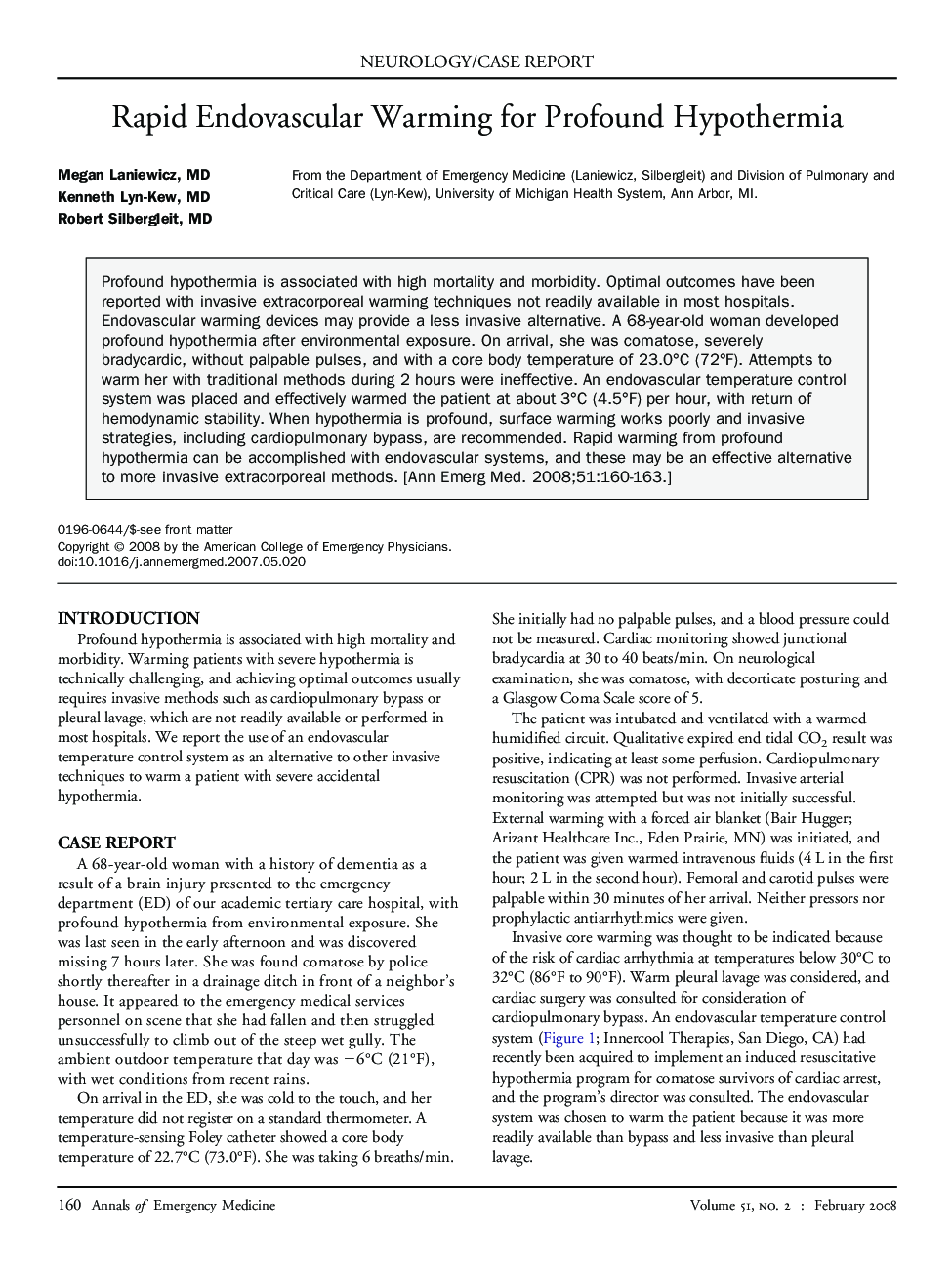| Article ID | Journal | Published Year | Pages | File Type |
|---|---|---|---|---|
| 3233214 | Annals of Emergency Medicine | 2008 | 4 Pages |
Profound hypothermia is associated with high mortality and morbidity. Optimal outcomes have been reported with invasive extracorporeal warming techniques not readily available in most hospitals. Endovascular warming devices may provide a less invasive alternative. A 68-year-old woman developed profound hypothermia after environmental exposure. On arrival, she was comatose, severely bradycardic, without palpable pulses, and with a core body temperature of 23.0°C (72°F). Attempts to warm her with traditional methods during 2 hours were ineffective. An endovascular temperature control system was placed and effectively warmed the patient at about 3°C (4.5°F) per hour, with return of hemodynamic stability. When hypothermia is profound, surface warming works poorly and invasive strategies, including cardiopulmonary bypass, are recommended. Rapid warming from profound hypothermia can be accomplished with endovascular systems, and these may be an effective alternative to more invasive extracorporeal methods.
